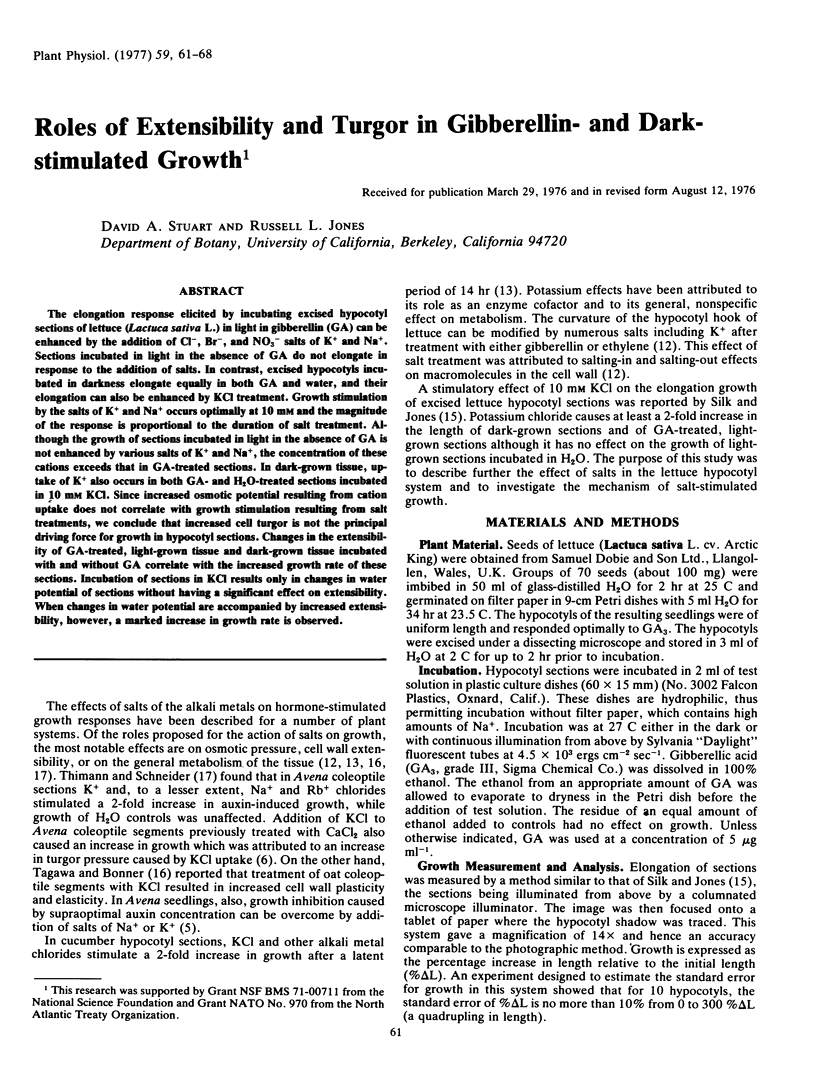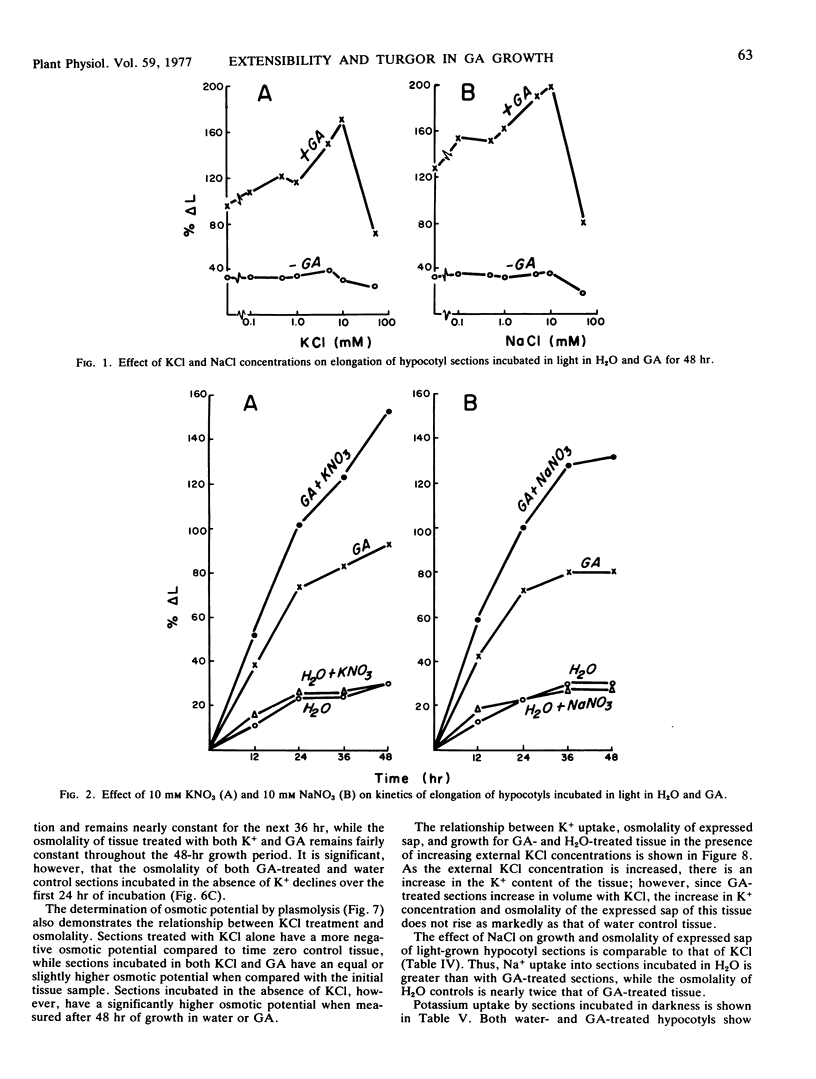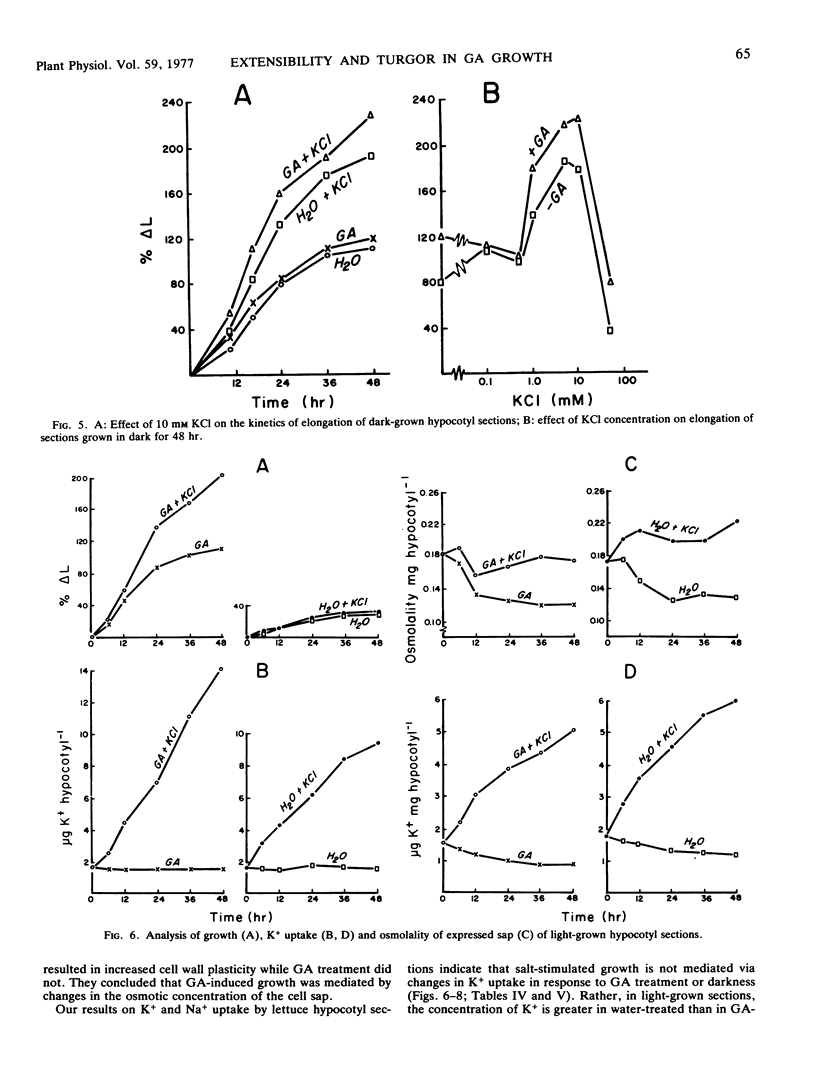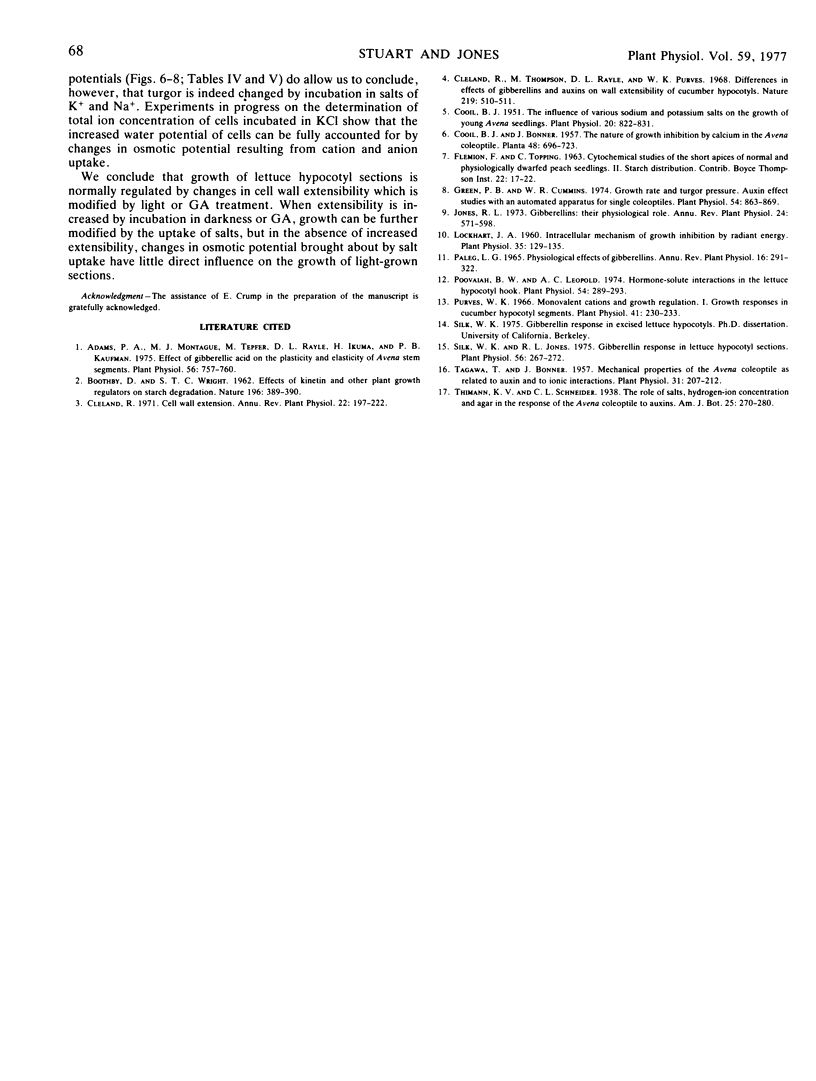Abstract
The elongation response elicited by incubating excised hypocotyl sections of lettuce (Lactuca sativa L.) in light in gibberellin (GA) can be enhanced by the addition of Cl−, Br−, and NO3− salts of K+ and Na+. Sections incubated in light in the absence of GA do not elongate in response to the addition of salts. In contrast, excised hypocotyls incubated in darkness elongate equally in both GA and water, and their elongation can also be enhanced by KCl treatment. Growth stimulation by the salts of K+ and Na+ occurs optimally at 10 mm and the magnitude of the response is proportional to the duration of salt treatment. Although the growth of sections incubated in light in the absence of GA is not enhanced by various salts of K+ and Na+, the concentration of these cations exceeds that in GA-treated sections. In dark-grown tissue, uptake of K+ also occurs in both GA- and H2O-treated sections incubated in 10 mm KCl. Since increased osmotic potential resulting from cation uptake does not correlate with growth stimulation resulting from salt treatments, we conclude that increased cell turgor is not the principal driving force for growth in hypocotyl sections. Changes in the extensibility of GA-treated, light-grown tissue and dark-grown tissue incubated with and without GA correlate with the increased growth rate of these sections. Incubation of sections in KCl results only in changes in water potential of sections without having a significant effect on extensibility. When changes in water potential are accompanied by increased extensibility, however, a marked increase in growth rate is observed.
Full text
PDF







Selected References
These references are in PubMed. This may not be the complete list of references from this article.
- Adams P. A., Montague M. J., Tepfer M., Rayle D. L., Ikuma H., Kaufman P. B. Effect of gibberellic Acid on the plasticity and elasticity of Avena stem segments. Plant Physiol. 1975 Dec;56(6):757–760. doi: 10.1104/pp.56.6.757. [DOI] [PMC free article] [PubMed] [Google Scholar]
- Cleland R., Thompson M. L., Rayle D. L., Purves W. K. Difference in effects of gibberellins and auxins on wall extensibility of cucumber hypocotyls. Nature. 1968 Aug 3;219(5153):510–511. doi: 10.1038/219510a0. [DOI] [PubMed] [Google Scholar]
- Cooil B. J. THE INFLUENCE OF VARIOUS SODIUM AND POTASSIUM SALTS UPON THE GROWTH OF YOUNG AVENA SEEDLINGS. Plant Physiol. 1951 Oct;26(4):822–831. doi: 10.1104/pp.26.4.822. [DOI] [PMC free article] [PubMed] [Google Scholar]
- Green P. B., Cummins W. R. Growth rate and turgor pressure: auxin effect studies with an automated apparatus for single coleoptiles. Plant Physiol. 1974 Dec;54(6):863–869. doi: 10.1104/pp.54.6.863. [DOI] [PMC free article] [PubMed] [Google Scholar]
- Lockhart J. A. Intracellular Mechanism of Growth Inhibition by Radiant Energy. Plant Physiol. 1960 Jan;35(1):129–135. doi: 10.1104/pp.35.1.129. [DOI] [PMC free article] [PubMed] [Google Scholar]
- Poovaiah B. W., Leopold A. C. Hormone-solute interactions in the lettuce hypocotyl hook. Plant Physiol. 1974 Sep;54(3):289–293. doi: 10.1104/pp.54.3.289. [DOI] [PMC free article] [PubMed] [Google Scholar]
- Purves W. K. Monovalent cations and growth regulation. I. Growth responses in cucumber hypocotyl segments. Plant Physiol. 1966 Feb;41(2):230–233. doi: 10.1104/pp.41.2.230. [DOI] [PMC free article] [PubMed] [Google Scholar]
- Silk W. K., Jones R. L. Gibberellin response in lettuce hypocotyl sections. Plant Physiol. 1975 Aug;56(2):267–272. doi: 10.1104/pp.56.2.267. [DOI] [PMC free article] [PubMed] [Google Scholar]
- Tagawa T., Bonner J. Mechanical Properties of the Avena Coleoptile As Related to Auxin and to Ionic Interactions. Plant Physiol. 1957 May;32(3):207–212. doi: 10.1104/pp.32.3.207. [DOI] [PMC free article] [PubMed] [Google Scholar]


